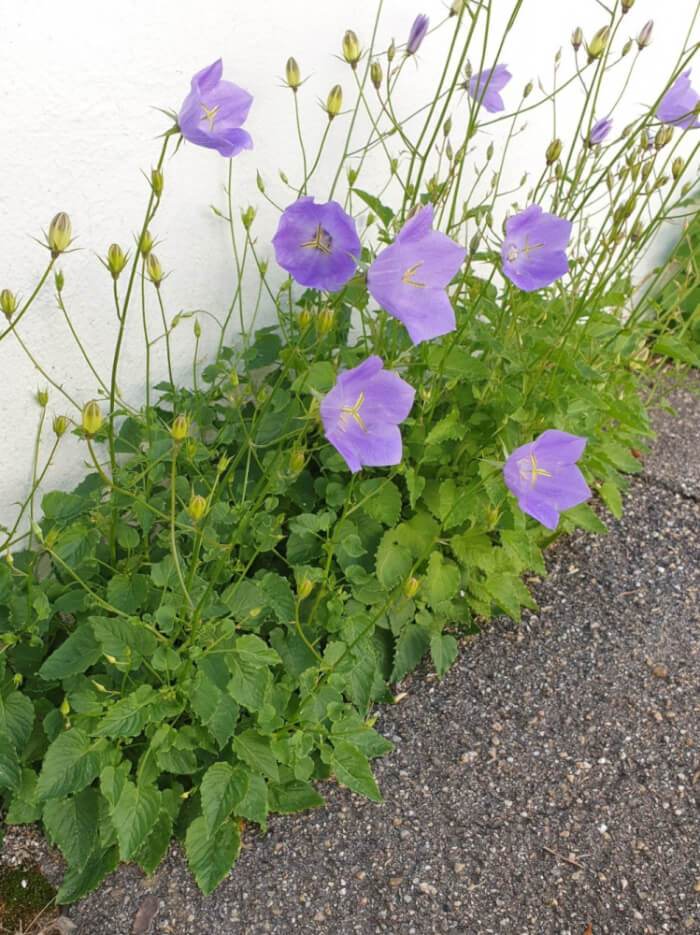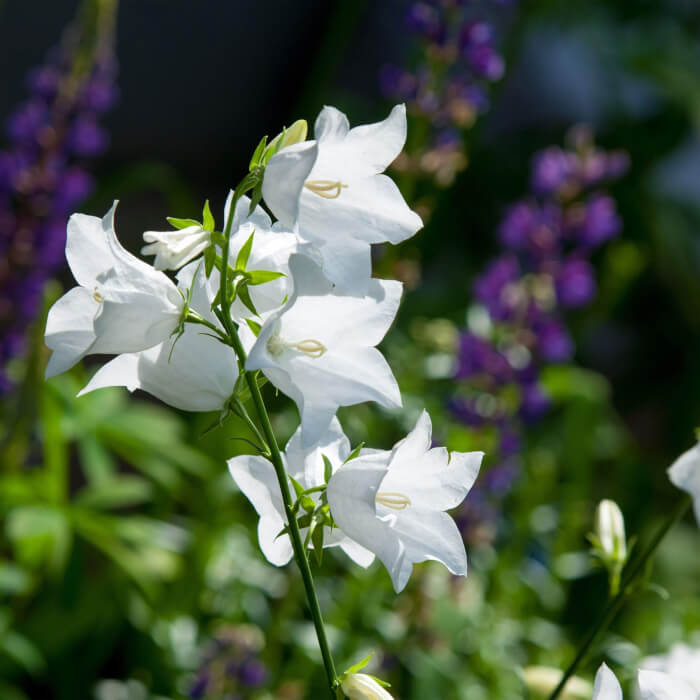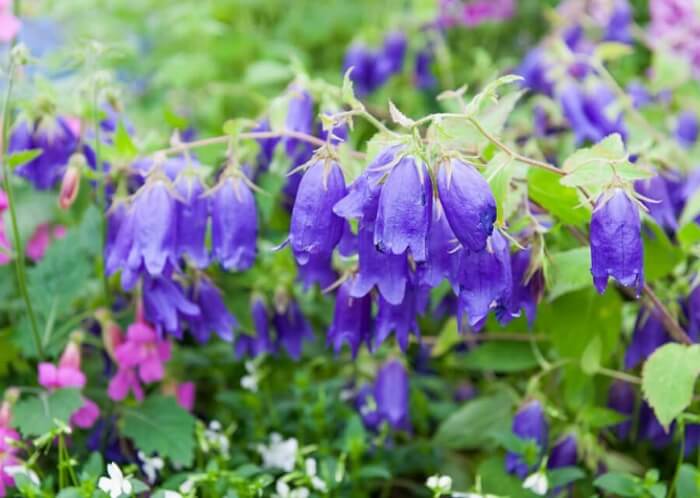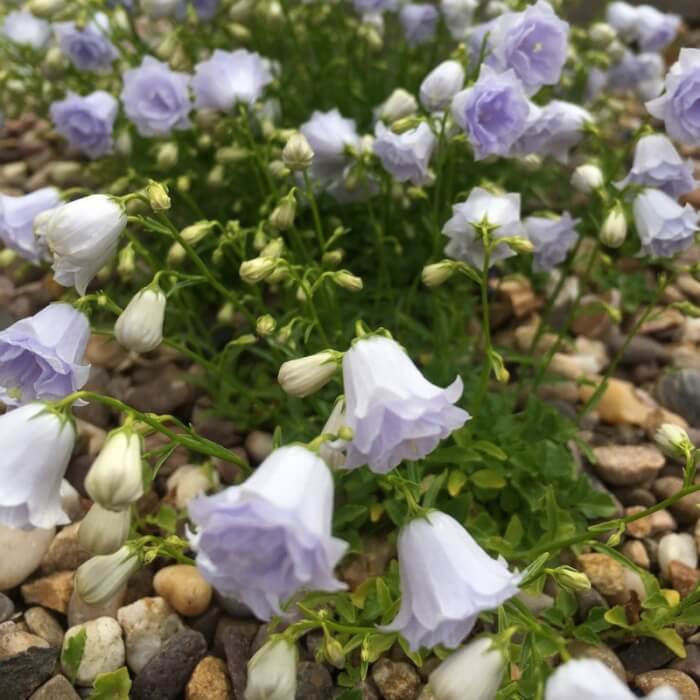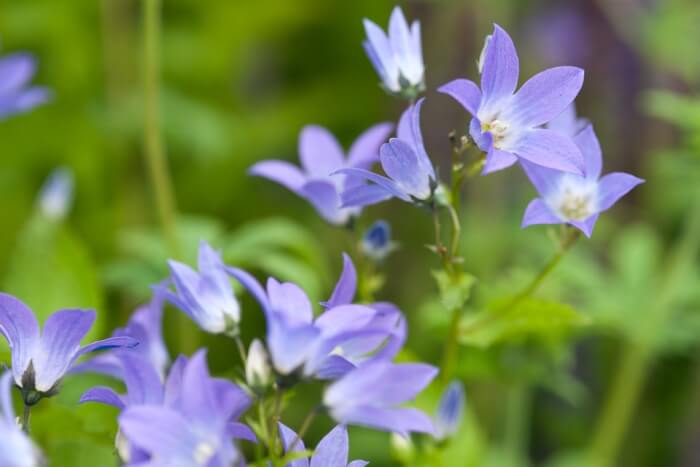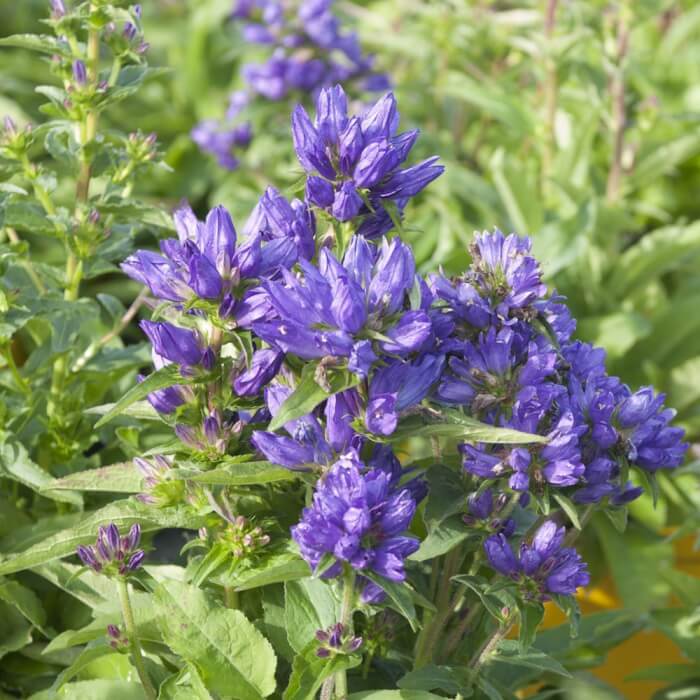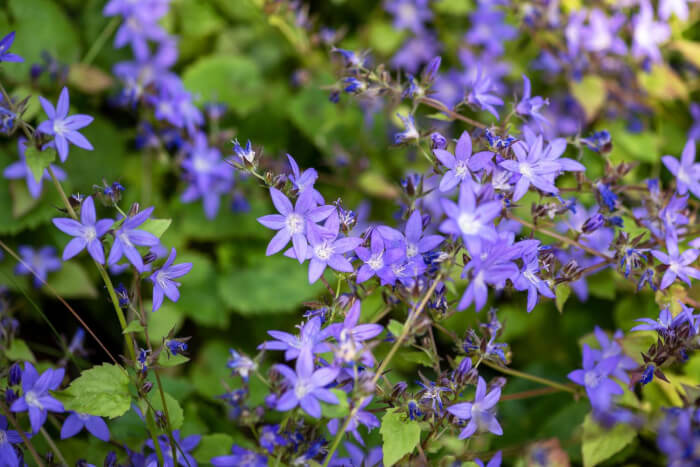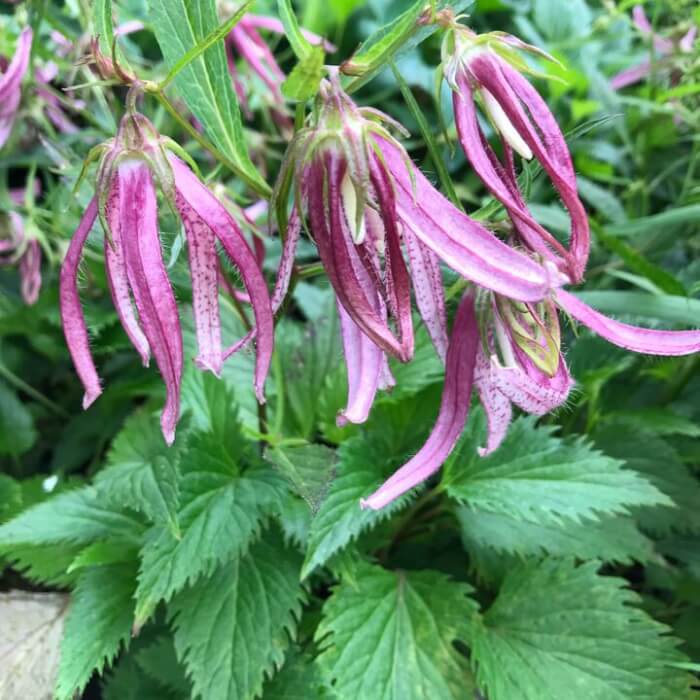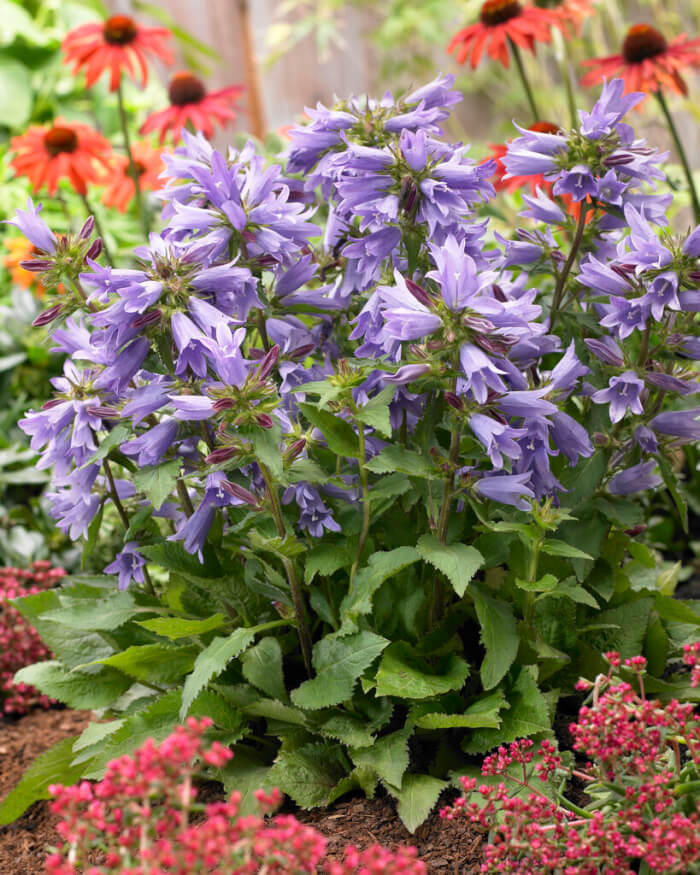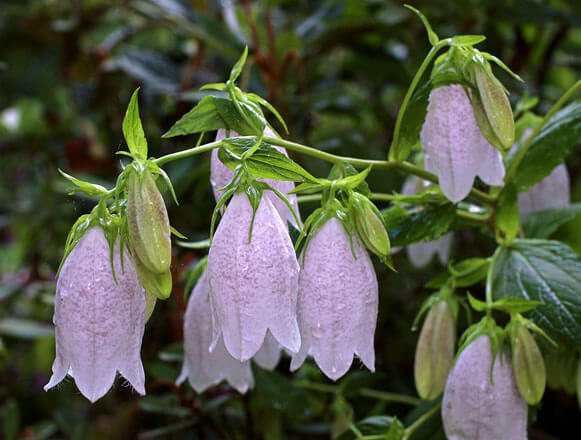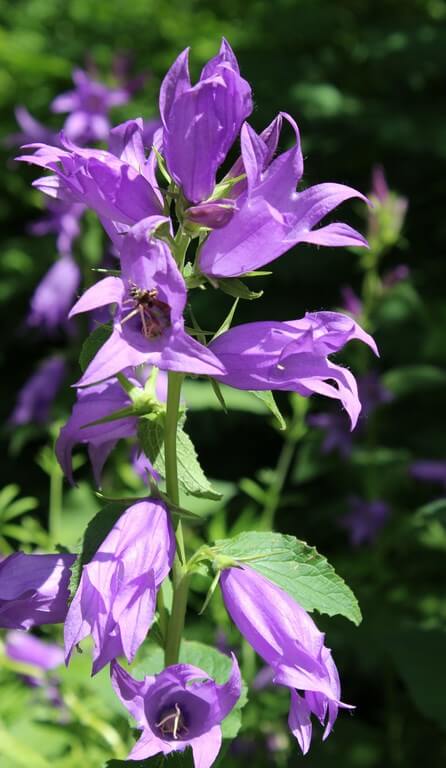Bellflowers are some of the most charming blooms you can grow, with their delicate star or bell-shaped blossoms swaying gently in the breeze.
These flowers come in shades of blue, purple, pink, and white, making them a versatile choice for garden beds, borders, or containers. Bellflowers don’t just add color; they also bring a natural softness and movement to your outdoor space.
The best part is that most bellflower varieties are easy to care for. With the right balance of sunlight, water, and well-drained soil, they reward you with weeks of vibrant blooms.
Some varieties even self-seed, making your garden more beautiful year after year. Here are 16 stunning types of bellflowers you can grow to enjoy their timeless beauty.
#1 Clustered Bellflower (Campanula glomerata ‘Caroline’)
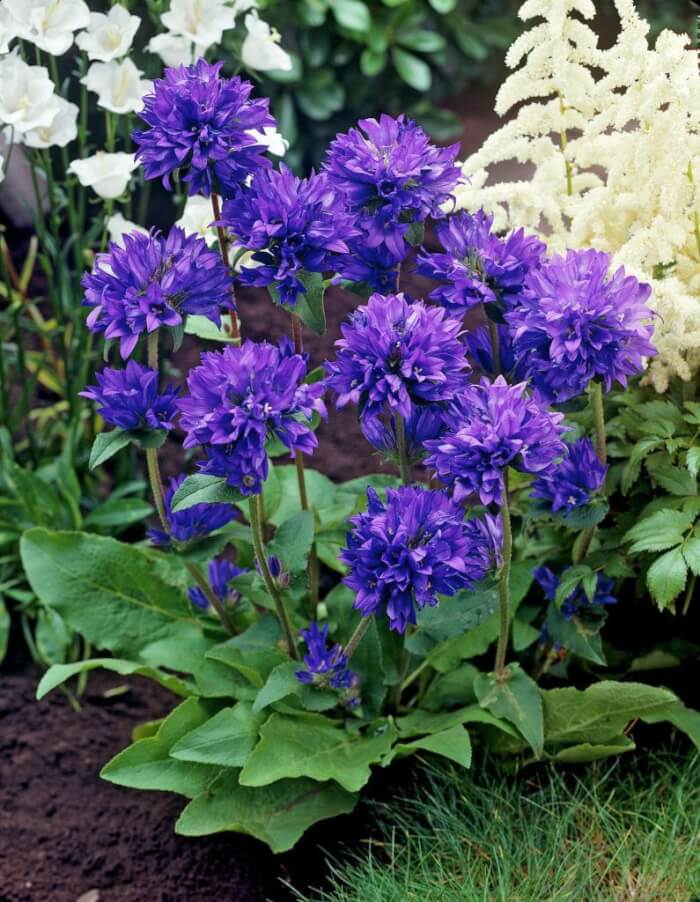
This variety forms dense clusters of deep purple blooms that stand out in garden beds. The flowers rise on upright stems, giving them a strong presence among softer perennials.
Plant them in full sun to partial shade for best results. Keep the soil evenly moist but not soggy. They make excellent cut flowers for bouquets. Clustered Bellflowers are long-lasting and bring a striking pop of color to your landscape.
#2 Tussock Bellflower (Campanula carpatica)
Tussock Bellflower grows into tidy mounds covered with lavender-blue flowers. Its compact size makes it perfect for edging or rock gardens. Give it full sun to partial shade and well-drained soil.
Deadhead spent blooms to encourage repeat flowering. These bellflowers spread slowly and fill gaps beautifully. Their cheerful look brightens up patios and small spaces.
#3 Peach-Leaved Bellflower (Campanula persicifolia ‘Alba’)
This elegant variety features tall spires of pure white, bell-shaped blooms. Its slender leaves resemble those of a peach tree, giving it its name. Plant in rich, moist soil and keep it in a sunny or lightly shaded spot.
Stake the stems if they grow too tall. They pair well with roses and delphiniums in mixed borders. Peach-Leaved Bellflowers bring a touch of classic grace to any garden.
#4 Sarastro Bellflower (Campanula ‘Sarastro’)
Sarastro Bellflowers produce large, deep violet-blue blooms that hang like lanterns. The flowers appear from early summer and keep going into autumn. They thrive in fertile, moist soil and prefer partial shade.
Cut back stems after flowering to keep the plant tidy. These bellflowers are striking in borders or cottage gardens. Their bold color makes them a standout choice.
#5 Elizabeth Oliver Bellflower (Campanula cochlearifolia ‘Elizabeth Oliver’)
This variety charms with its double, rosette-like blue flowers. It has a trailing habit, making it ideal for hanging baskets or as ground cover. Grow it in full sun or partial shade with well-drained soil.
Keep the soil lightly moist for steady growth. Its dainty flowers create a soft, romantic look. Elizabeth Oliver Bellflowers add elegance to both containers and borders.
#6 Milky Bellflower (Campanula lactiflora ‘Loddon Anna’)
Milky Bellflowers feature tall stems topped with clusters of pale lilac blooms. They bloom profusely from midsummer to early fall. Give them rich, moist soil and plant in sunny or lightly shaded areas.
Cut back spent stems to encourage more blooms. Their height makes them perfect for the back of borders. Milky Bellflowers bring a dreamy, meadow-like feel to gardens.
#7 Chimney Bellflower (Campanula pyramidalis)
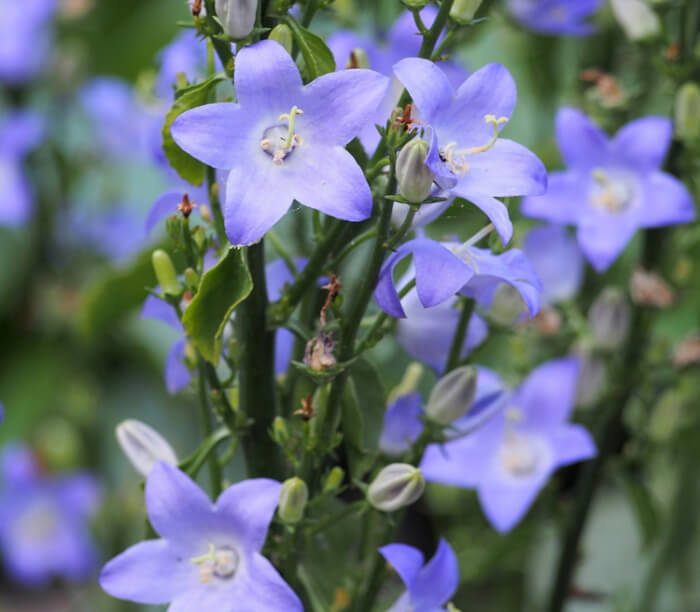
Canterbury Bellflowers are known for their tall spikes of bell-shaped blossoms. The ‘Champion Pink’ variety glows with soft pink flowers that last for weeks. They prefer full sun and fertile, well-drained soil.
Water regularly to keep the soil slightly moist. These biennials are favorites for cottage gardens and bouquets. Their stately look adds structure and charm to borders.
#8 Milky Way Bellflower (Campanula punctata ‘Milky Way’)
This variety delights with white petals speckled in purple, resembling a starry night. The blooms are nodding and tubular, giving them a unique charm. Plant in partial shade with moist, fertile soil.
Keep them well-watered during dry spells. Their unusual markings make them a conversation starter. Milky Way Bellflowers are perfect for shaded garden corners.
#9 Clustered Bellflower (Campanula glomerata ‘Superba’
‘Superba’ produces larger clusters of violet-blue flowers than most bellflowers. The blooms are dense and vibrant, creating a dramatic effect. Grow in sun or partial shade with moist, well-drained soil.
Deadhead regularly to extend flowering. These make excellent cut flowers for vases. Clustered Bellflower ‘Superba’ is bold and full of personality in the garden.
#10 Dalmatian Bellflower (Campanula portenschlagiana)
Dalmatian Bellflowers form spreading mats of purple blooms that tumble over walls or containers. They flower generously through summer and early fall. Plant them in well-drained soil with plenty of sun.
Trim after flowering to keep them neat. Their trailing habit makes them ideal for hanging baskets. Dalmatian Bellflowers bring vibrant charm to small gardens.
#11 Pink Octopus Bellflower (Campanula ‘Pink Octopus’)
Pink Octopus Bellflowers have unusual blooms that resemble octopus tentacles. Their star-shaped flowers are pink with delicate, fringed petals. Plant in fertile, moist soil with sun to partial shade.
Water regularly during hot weather. They add a whimsical touch to borders or containers. This variety is truly one-of-a-kind and sure to catch attention.
#12 Viking Bellflower (Campanula ‘Viking’)
Korean Bellflowers feature long, nodding, tubular blooms in pinkish-purple shades. They spread vigorously and fill garden spaces with ease. Plant in partial shade with moist, fertile soil.
Trim back runners if you want to keep them contained. Their cascading flowers look lovely on slopes or in woodland gardens. Korean Bellflowers bring a natural, wildflower charm.
#13 Korean Bellflower (Campanula takesimana ‘Elizabeth’)
True to its name, Giant Bellflower grows tall with large, violet-blue bells. It blooms in midsummer and stands proudly in garden borders. Plant in moist, fertile soil with sun or partial shade.
Stake taller stems if needed. The height and size of the flowers make a dramatic display. Giant Bellflowers are perfect for the back of large beds.
#14 Giant Bellflower (Campanula latifolia)
Scottish Bluebells are delicate wildflowers with nodding, violet-blue blooms. They prefer lean, sandy soils and thrive in open, sunny areas. Water lightly, as they tolerate drought well once established.
Their airy stems create a soft, natural look. These bellflowers often self-seed and return each year. Scottish Bluebells add a simple, timeless beauty to any garden.
#15 Scottish Bluebell (Campanula rotundifolia)
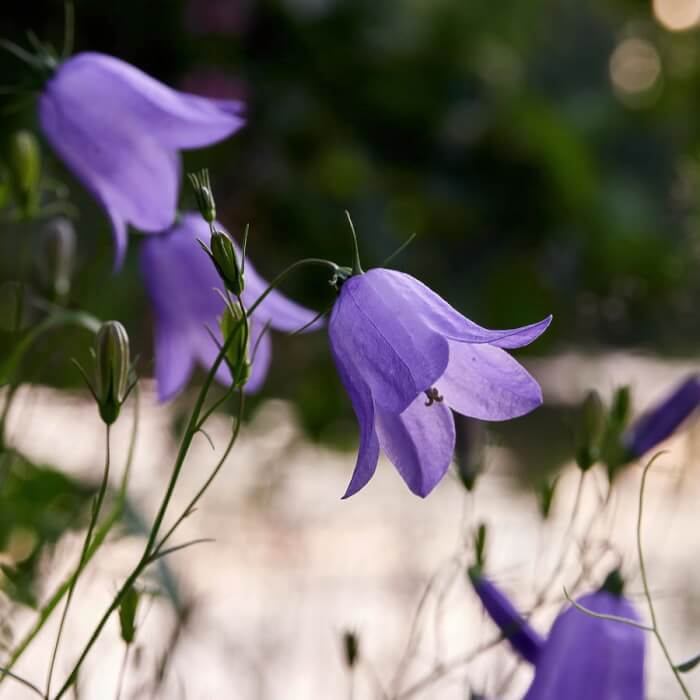
Chimney Bellflower grows into tall pyramids of sky-blue flowers. Its upright form makes it ideal for dramatic displays. Plant in fertile, well-drained soil and place in full sun.
Keep soil evenly moist during the flowering season. This biennial is striking in both gardens and large containers. Chimney Bellflowers bring a majestic elegance to summer landscapes.

